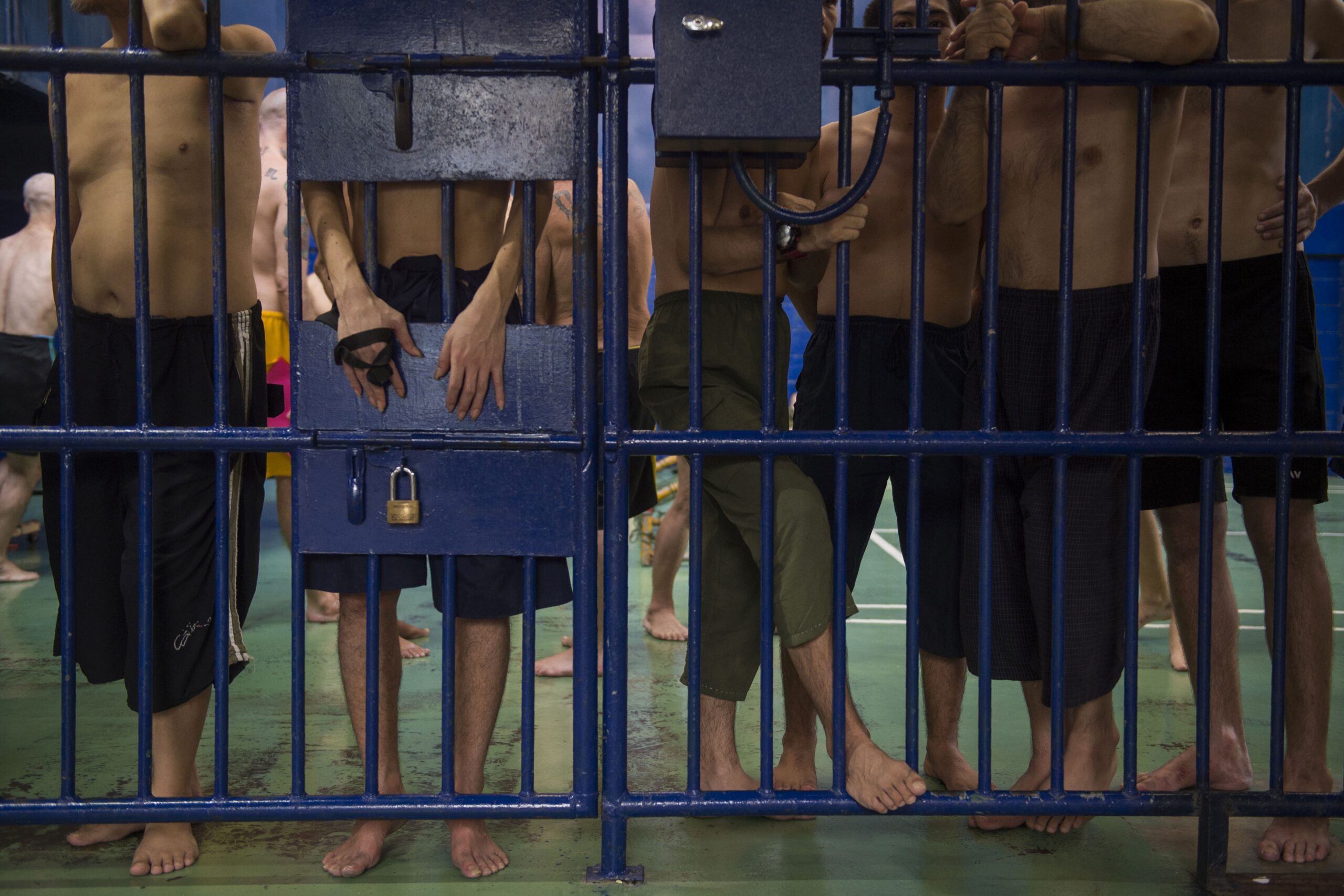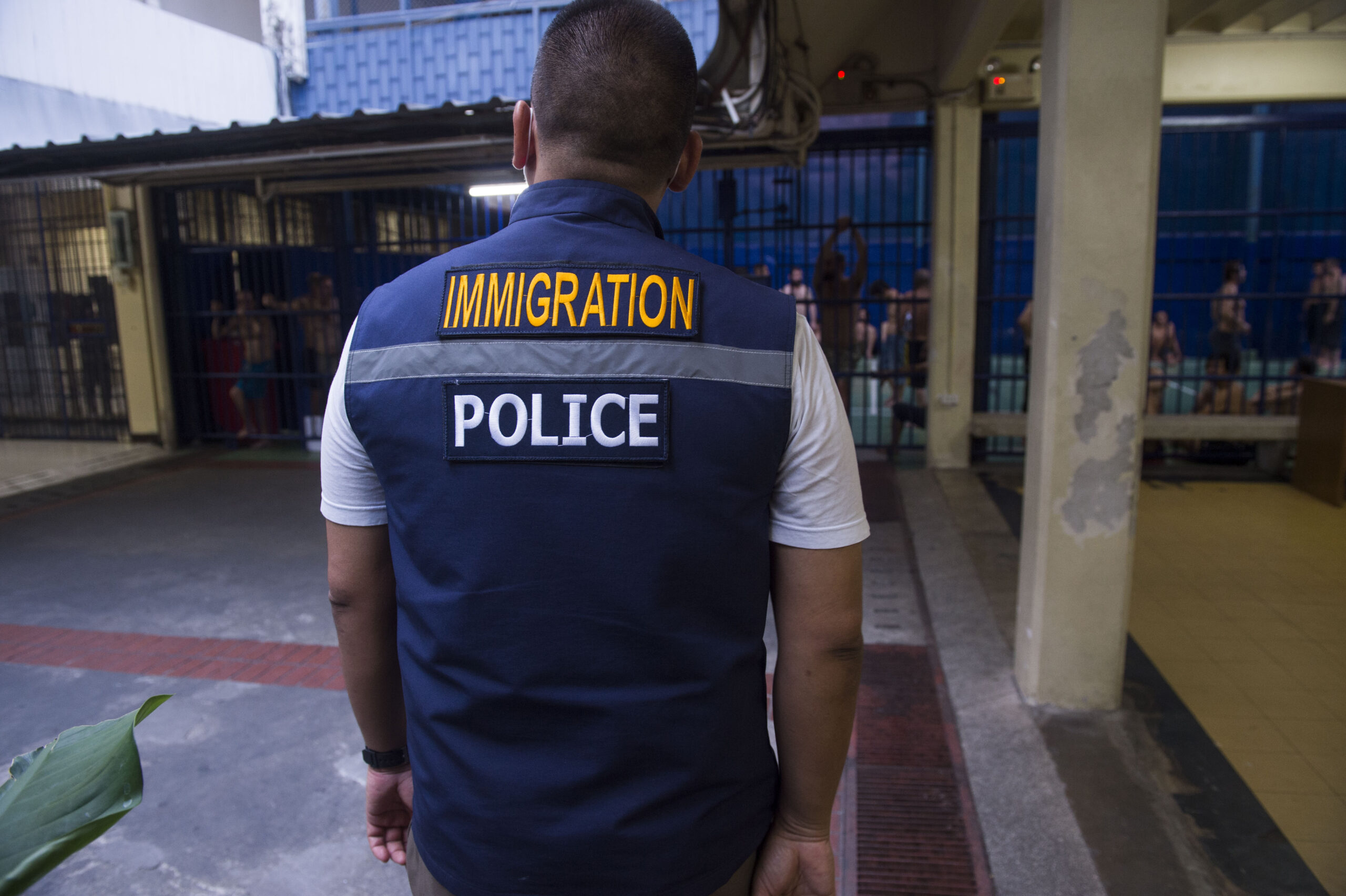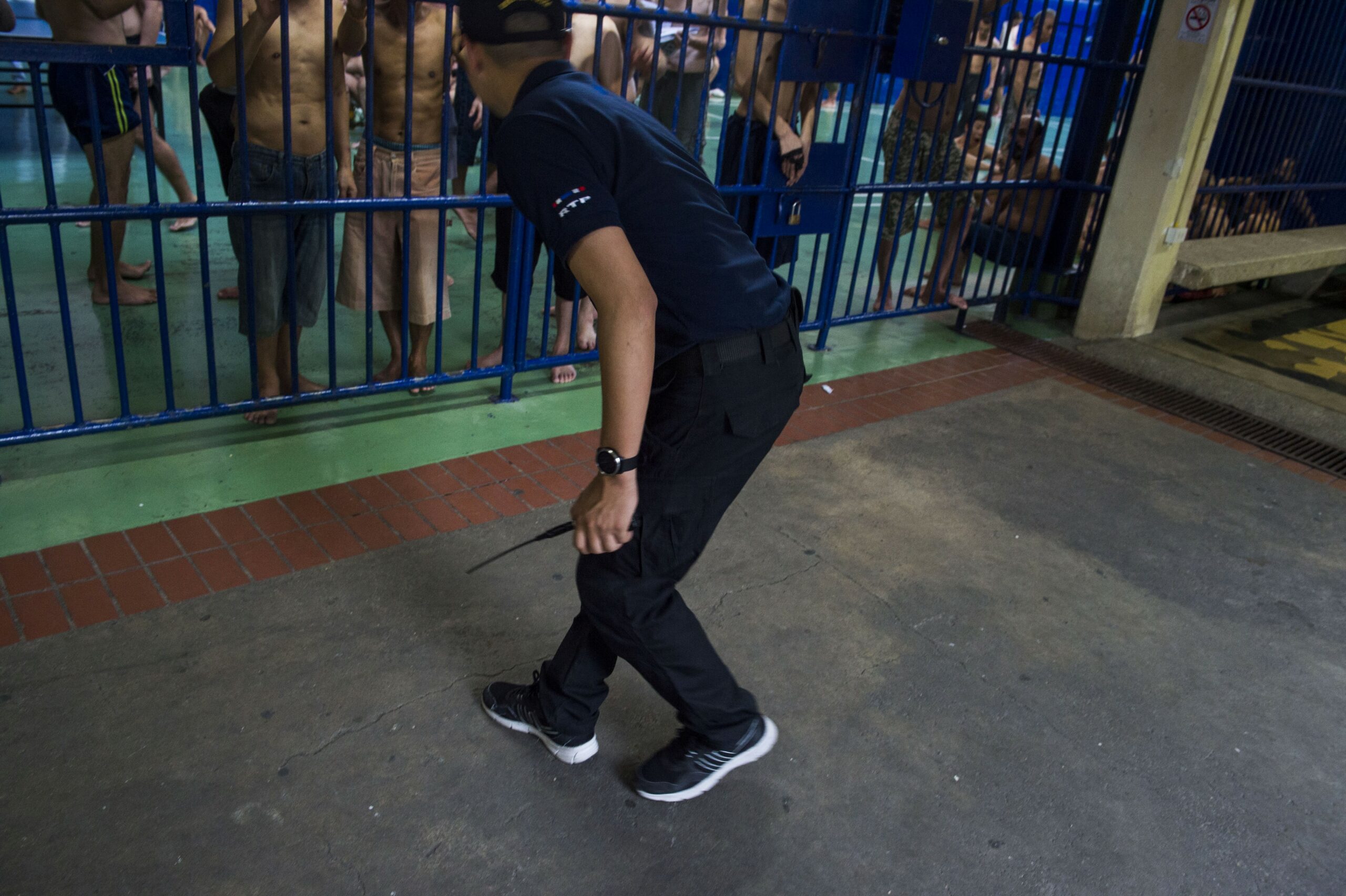The detention centre was sweltering as Bangkok’s heat oppressed the crowded room.
Dark steel bars lined the cells while scores of imprisoned migrants counted down the hours of the day. Crammed together in a tight space, the refugees were in a constantly agitated state. The watchful eyes of the correctional officers loomed over them from the other side of the bars.
“If I even made a small mistake … they would ring the bell and immigration [personnel] would come in and beat you like an animal,” said *David, a refugee who recalled his experience living in Bangkok’s Immigration Detention Center (IDC) on and off from 2014 to the end of 2021.
Thai police have been searching for illegal migrants throughout the country, often arresting refugees who have fled persecution.
Thailand is not a signatory to the 1951 Refugee Convention and does not have specific asylum legislation. Consequently, refugees and asylum seekers are routinely arrested and treated as criminals, as was the case in a 19 July raid in Bangkok that resulted in 14 arrests.
Officers also detained three children during the raid, a move that has caused widespread condemnation within child protection groups. But the crackdown has also brought something more sinister to light – new allegations of physical abuse inside Bangkok detention centres where hundreds of migrants have been detained for years.
Based on interviews with five refugees who were released over the last two years, correctional officers at immigration detention centres have allegedly physically abused detainees in retaliation for breaking rules and to assert total control.

“They would tie you up, and sometimes they took disabled people into that room, some people lost their sight, some people lost their [ability to walk],” David said. “The person would be normal going inside, and then they would come back as a completely different person.”
One refugee currently inside a Bangkok detention centre alleged corporal punishment is still happening today. *Joseph said he witnessed abuse last month, not long after he was brought into the centre.
“I have never seen people get beaten up this way, there was so much blood,” Joseph said, adding that a group of Myanmar detainees tasked by the guards were “watching everyone.”
“Everything that happens in here must be kept secret,” he explained, or the detainees would face reprisals.
He alleged that other detainees would be appointed “leaders of the room,” or cell space. Then they would routinely task other prisoners from neighbouring countries such as Myanmar or Cambodia, to inflict the majority of the abuse. Those who carried out the abuse were sometimes given special privileges and identified by wearing orange vests.
Other forms of alleged punishment were less actively violent, but still physically distressing. David said he was once handcuffed to four other men in deliberately uncomfortable positions where they were held for hours.
I have never seen people get beaten up this way, there was so much blood”
Joseph, detained refugee
During the punishment sessions, detainees would be taken to a separate where the bulk of the abuse took place. The room is ominously referred to as “Room 4,” and is commonly known to anyone who has spent time in the particular Bangkok IDC, David added.
“I was beaten, of course. But I was not beaten as not bad as what now happens in that room,” David said, referring to stories he’d heard from others during his long detention.

A history of violence
Amnesty International released a report on similar allegations happening in other types of correctional facilities in 2002. But most cases were in relation to a conflict situation in Thailand’s deep south or convicted criminals. These new allegations in Bangkok are possibly the first to be revealed in the capital targeting migrants.
Fortify Rights, a human rights watchdog based in the region, have documented similar allegations of abuse. The group shared their findings with Southeast Asia Globe.
“These allegations detail horrendous abuse, which Thai authorities are likely to deny. But sub-human conditions in Thai immigration detention and abuse of detainees has been known about for many years,” said Patrick Phongsathorn, human rights advocacy specialist at Fortify Rights. “There now needs to be a wholesale reform of Thailand’s immigration system.”
“No one should ever be detained solely on the basis of their migration status,” he added.
The watchdog group also uncovered potential corruption inside Bangkok’s detention centres. Testimony shared with Globe by Fortify Rights, reveals very similar accounts of violence, including officers tasking detainees to beat each other with sticks.
One refugee who spoke to Fortify Rights in January said, “there were so many cases where people were fighting and those people were coming with big sticks… like five or six people coming inside your room, [or] the basketball court and they are beating people.”
Globe reached Thailand’s Immigration Sub Division 3, the department in charge of the capital’s detention centres, but they did not follow through with a comment on the allegations.
However, Thailand’s National Human Rights Commission told Globe they have not received any recent complaints about abuse inside detention centres, but they did not completely rule out the refugee’s claims.
“I can say during my one and half years here, we did not receive any complaints about abuse in detention yet,” said Pitikarn Sitidej, National Human Rights Commissioner. “But if we receive a complaint about this happening, then we have to immediately and directly investigate the case.”
She said that part of the commission’s mandate is to inspect and visit detention centres. Her agency plans to visit the facilities in the coming months where they will first focus on the protection of women and children.

Conditions inside
Many who have seen the inside of Thailand’s detention centres describe squalid conditions where hundreds of people are crammed into unsanitary spaces and disease can be easily transmitted.
Human rights groups such as Amnesty International have documented detainees’ lack of access to proper hygiene, nutrient dense food, physical exercise, or appropriate medical treatment. Refugees who spoke to Globe shared similar accounts of extremely poor conditions.
But it’s not just the conditions inside these prisons that have caused so much alarm.
Police have made headlines with the arrest and charging children as criminals over the last few years. When the unexplained death of a Rohingya girl rang even more alarm bells throughout the country, many within the refugee rights community started advocating for safer alternatives to the detention of children.
The pressure culminated in the Thai government signing a memorandum of understanding recognising that children should only be detained briefly and as a measure of last resort.
But Waritsara Rungthong, a protection officer and lawyer from Refugee Rights Litigation Project, who works closely with newly detained refugees, said immigration authorities need to do more to avoid harming children.
“Now we see that this [detention of children] is a problem, and so we are challenging their internal practice to see if there can be a better solution,” Waritsara said. “And I think that the detention conflicts with the constitution and other legal commitments.”
Waritsara did not comment on the new allegations of abuse, but she is concerned that immigration authorities on 19 July refused to process children as minors, a separate process that would shield them from criminal prosecution.
“Immigration said they have the authority to arrest and detain people without bringing the person to the court, using the Immigration Act,” Waritsara said. “I asked them, ‘Why didn’t you bring the children to the juvenile court and use other methods?”
‘Room 4’
Another refugee, *Matthew, alleges similar abuse at a facility in Bangkok. He said the violence has been going back as far as 2015.
“Yeah, I have experienced that room [Room 4], I have been there,” Matthew recalled the moment he was brutally punished in 2015.
“I had a disagreement with another guy, and the imigration was informed, they came in and took us to that room. The first thing that happens, as soon as you are put in the room, your hands and your legs would be tied together… He [the room leader] has a dozen guys who are usually from Cambodia or Vietnam, who usually beat people for him. So he orders them to beat you, and then they start kicking you.”
Matthew said multiple men began striking and kicking him all over his body, including his head and face. But the violence did not end there.
“Sometimes he has a bat with him, and he would beat you with that bat,” Matthew said with anger in his voice. “Some people would be beaten several times during the [same] day.”
The sense of fear inside Room 4 was so overwhelming that detainees often huddled in one corner of the room, sometimes refraining from asking for food or water out of fear they could be beaten again if they inadvertently upset those in charge.
Although Matthew doesn’t remember an exact number of people abused over the seven years he spent inside, he said the numbers were high.
Outside of the stained concrete walls of the Bangkok detention centre, a sense of pain still lingers for those who experienced violence there. And for David, now in a relatively safe undisclosed location, the memories of that experience will never leave him.
“I am just wondering when this is going to end, if this life will ever be better?” David said. “How long will I be able to be in this situation?”
*Pseudonyms were used to protect the identities of our sources. Ethnicities, ages, and other details were deliberately omitted.


